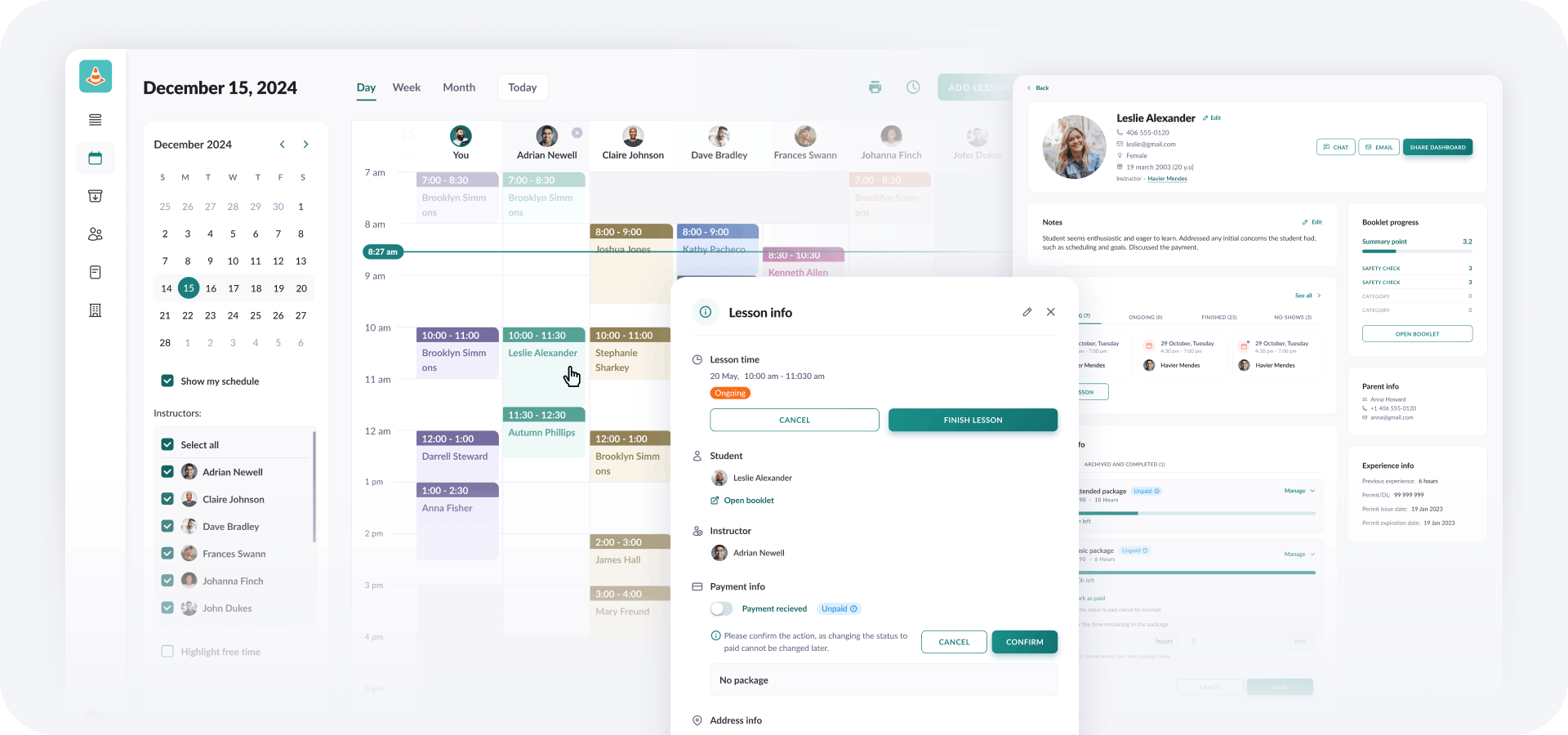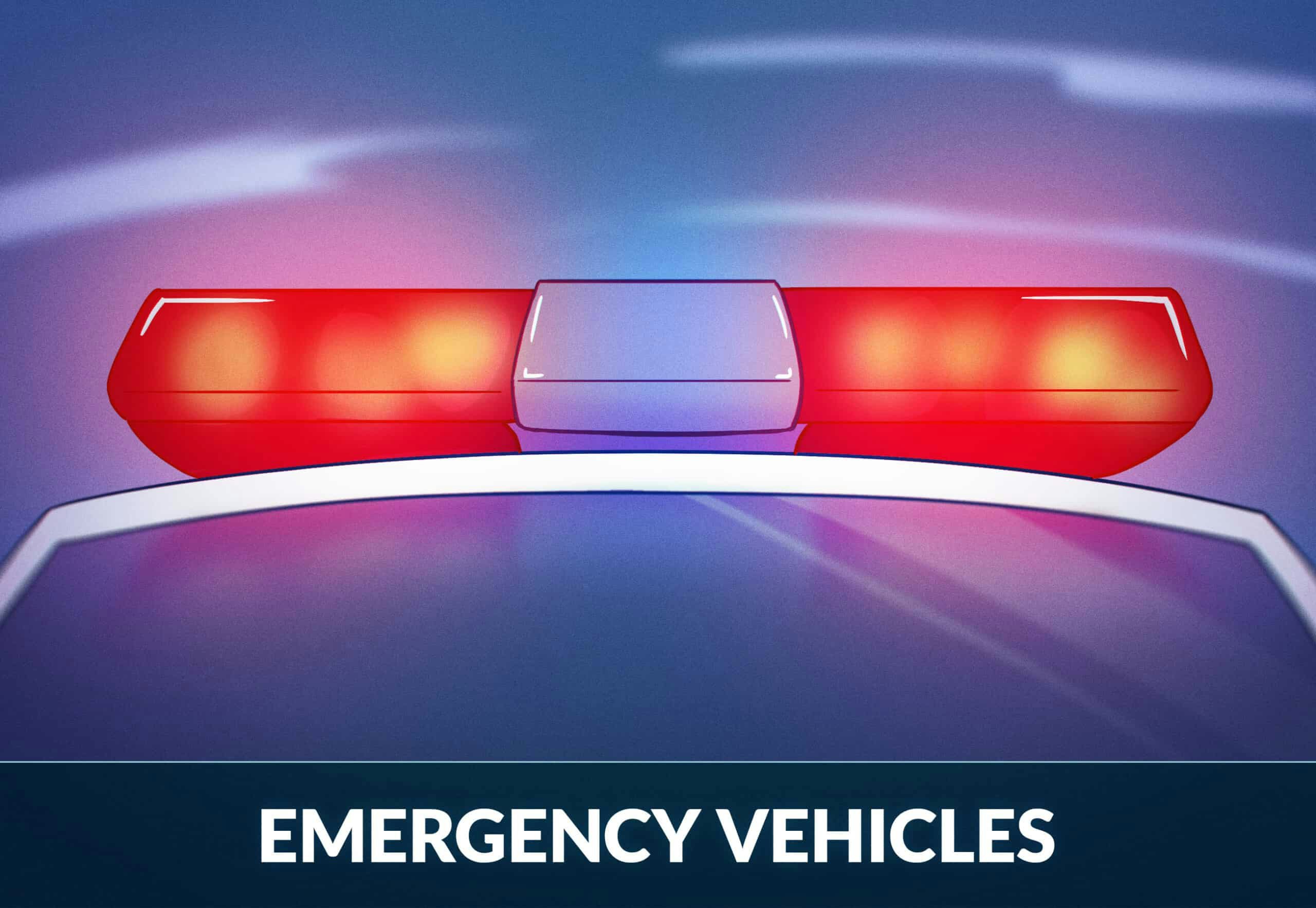
Emergency Vehicles & Law Enforcement: What to Do and How to Act
When approaching an emergency vehicle on the roadway with flashing lights or sirens, you must yield the right-of-way in every situation. This includes police cars, ambulances, fire trucks, and other government vehicles with blinking or flashing lights.
Emergency vehicles are allowed to break traffic rules, such as driving on the wrong side of the road, passing red lights, and ignoring road signs.
Several states are reporting an increase in drivers failing to move over and crashing into emergency responders.
How to Pull Over For Emergency Vehicles
When you hear or see an emergency vehicle approaching, you must be prepared to pull over to the edge of the road and stop.
Try to determine if the emergency vehicle is:
- Approaching from behind
- Approaching from the opposite direction
- Stopped
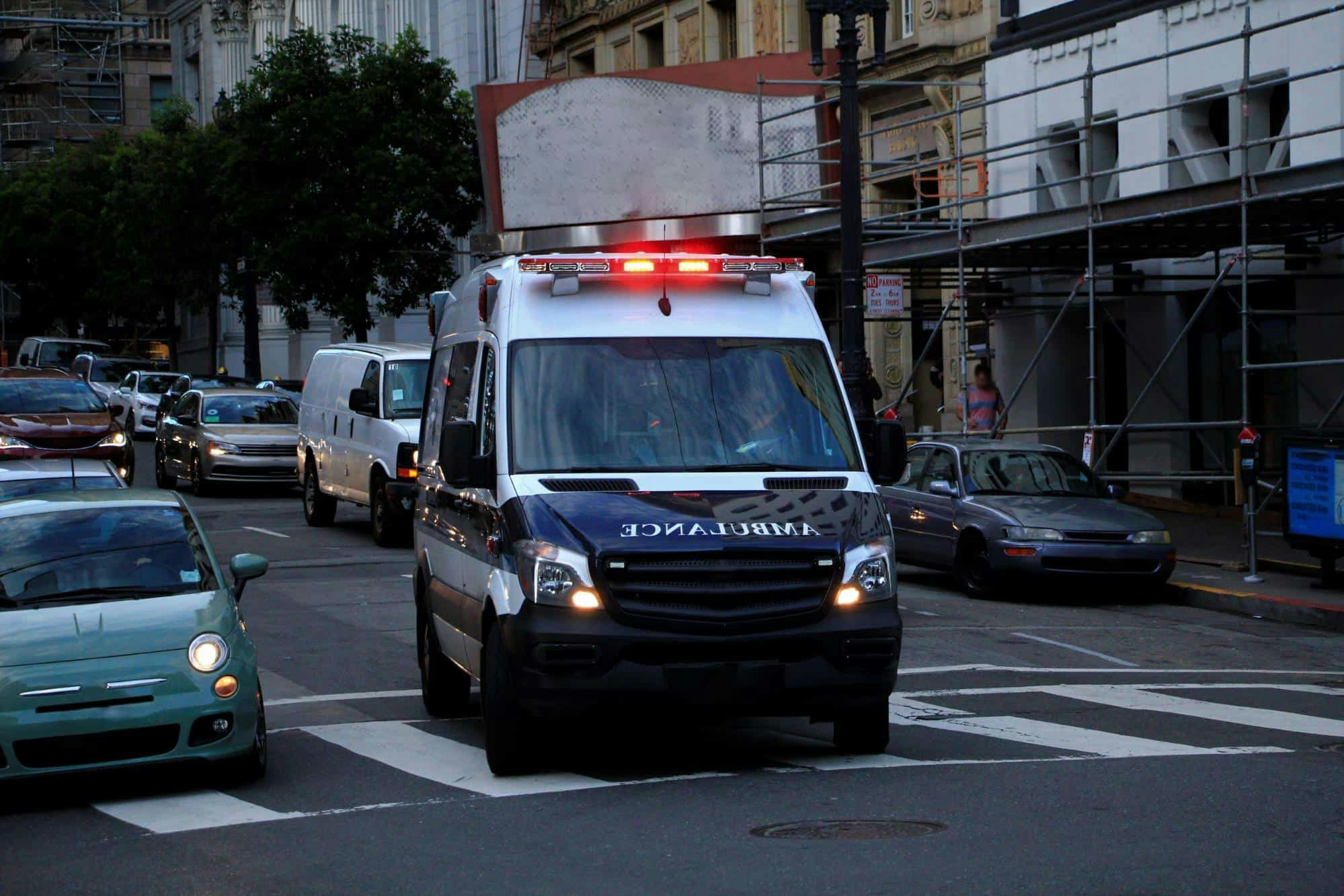
General Rules when Sharing the Road With Emergency Vehicles
Here are some general tips to keep in mind when sharing the road with emergency vehicles. However, laws vary by state and you should look into the specific law of your state to make sure you’re aware of its rules and local guidelines.
- Rule #1: Emergency vehicles must be given free passage, and you should wait until it has safely passed before continuing. However, do not stop within an intersection! Continue through the intersection and then pull over to the side of the road.
- Rule #2: You should try to keep a distance of at least 200-300 feet behind an emergency vehicle with sirens. Some states even have laws clearly specifying how close you can drive behind one.
- Rule #3: Slow down when passing a stopped emergency vehicle.
- Rule #4: If an emergency vehicle is stopped on the side of the road, vacate the lane closest to the vehicle. If unable to do so, slow down considerably.
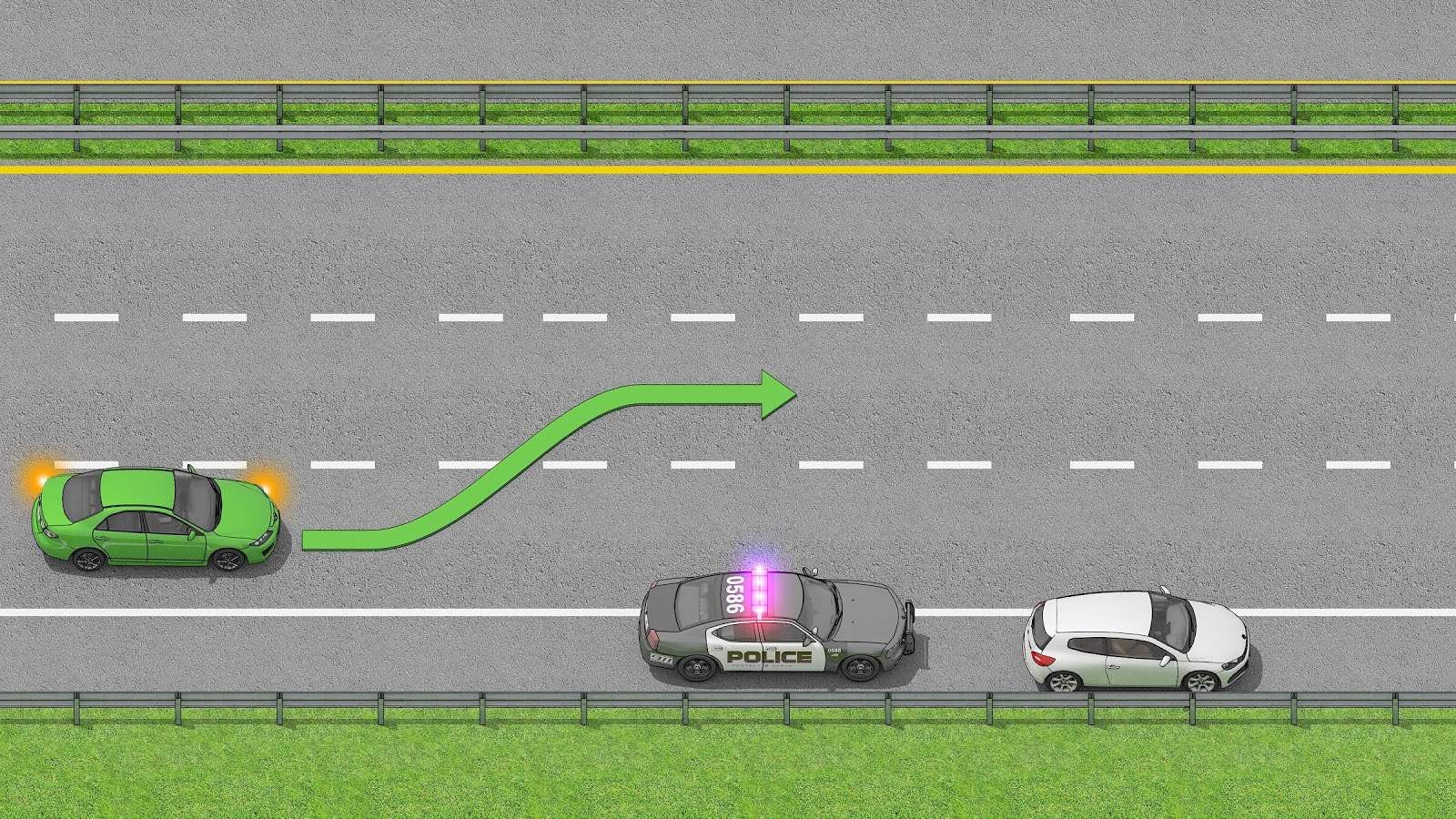
Law Enforcement
A DUI checkpoint common practice among police enforcement officers. Police officers will question and evaluate the state of the driver and the vehicle for signs of alcohol or drug impairment, illegal use of a communication device while driving, among other things.
How to Act When Stopped by Police
When a police enforcement officer asks you to pullover, immediately do the following in a safe manner:
- First, activate your right turn signal to show that you understand that you must pull over.
- Second, let the patrol vehicle guide you to the right shoulder of the road, and pull over. If you can, try to stop in a well-lit area.
Once you have pulled over, we suggest you do the following:
- End any phone call. You must give the officer your complete and undivided attention
- Turn off any music. Communication must be clear between you and the police officer
- Remain in your vehicle. Don’t exit your vehicle unless expressly told so by the officer!
- Show your hands! Place your hands on top of the steering wheel and in clear view for the officer. All passengers should likewise place their hands in clear view (e.g. on top of their lap)
- If your vehicle has tinted windows, roll down all windows before the officer reaches your vehicle.
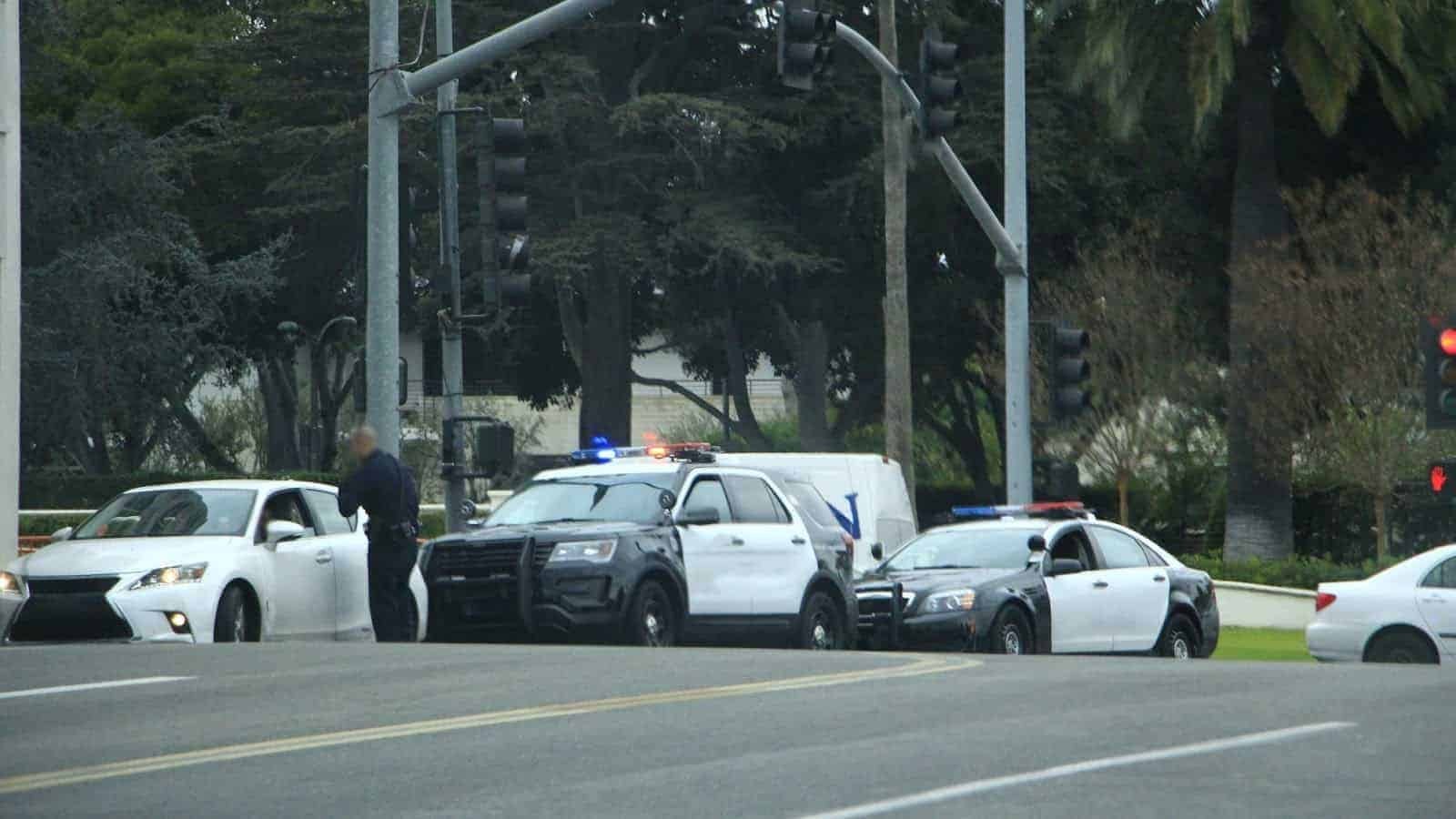
At any point, the officer may feel threatened if:
- You fail to comply with any of the above mentioned
- You fail to comply with the officer’s instructions
- There are any sudden movements in the vehicle
Traffic Control Officers
If a traffic control officer, law enforcement officer or other authorized personnel is directing traffic, their actions override any existing traffic laws, traffic signal or any other traffic control devices.

550+ exam-like questions
All you need to ace your test
Perfect for first-timers, renewals and senior citizens
Recommended articles
Ace your DMV test, guaranteed
Want to Be the Top School in Your Area?
- Simple & automated admin
- More time for teaching
- #1 learning materials for students

